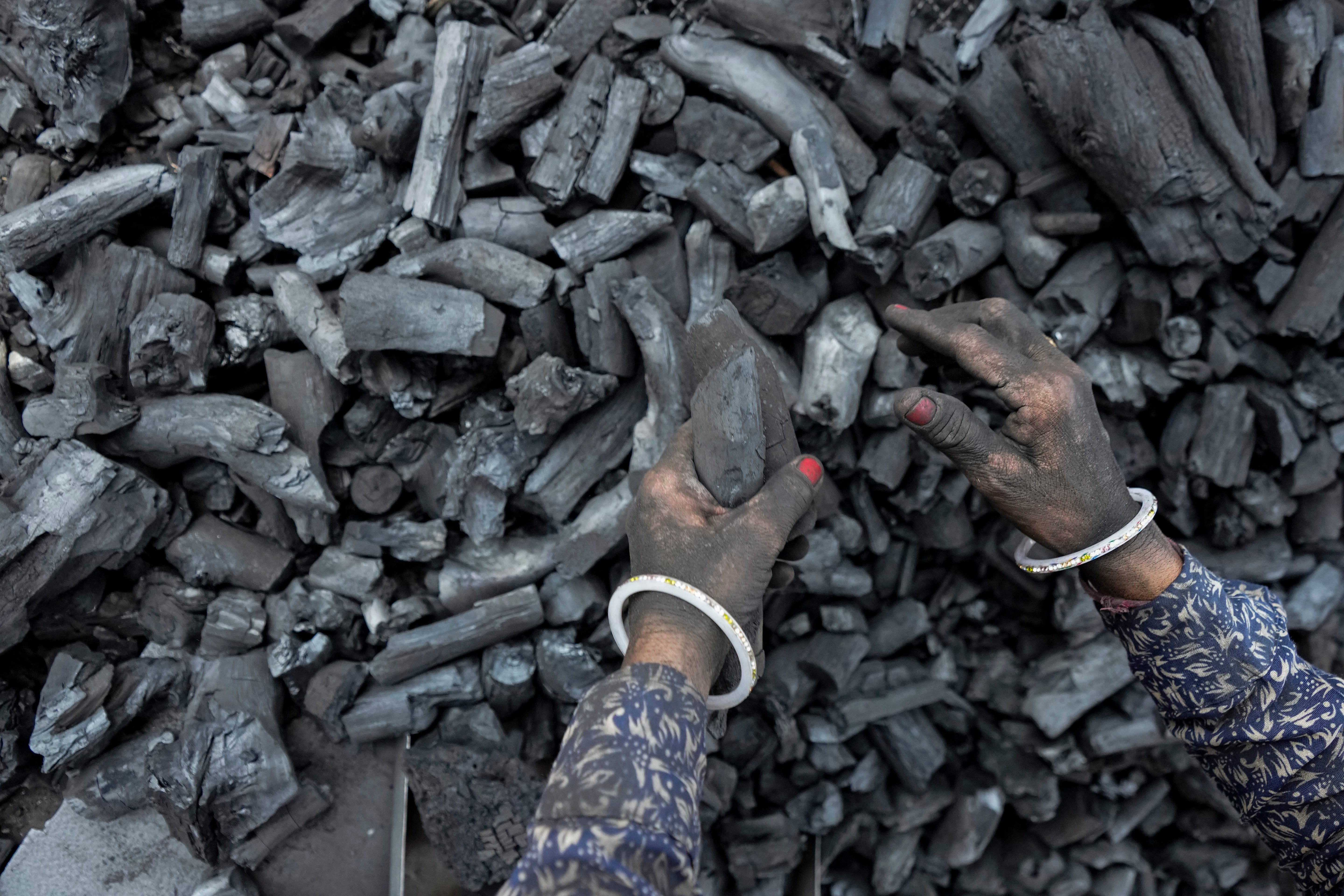BENGALURU, India (AP) — India Prime Minister Narendra Modi was in the midst of a monthslong reelection campaign this April when he took to social media to trumpet a “remarkable feat!” and a “historic milestone” for his country: crossing 1 billion metric tons of coal and lignite production. It was proof, Modi said, of India's “commitment to ensuring a vibrant coal sector.”
A month later, for the third year in a row, his government ordered some coal plants to run at full capacity to meet high electricity demand during the increasingly hot summer months.
Even though India has been significantly increasing its renewable energy capacity in recent years, when demand for electricity surges, it still goes back to its most trusted source of power: coal.
For the first six months of this year, India has responded to major energy demand from its growing population and greater cooling needs because of extreme heat, in part due to climate change, by relying on its coal-fired plants. The country also plans to add more coal plants.
India's coal demand rose nearly 10% in 2023, or about 105 million metric tons, in the biggest jump by percentage for any country, according to the International Energy Agency. Demand in China rose 6%.
“We know the Indian government is serious about its climate commitments,” said Carlos Fernández Alvarez, the lead author of the IEA report. But he acknowledged the “huge need to ensure people have electricity” in India, and added: “We don’t believe that India will be a front runner in the coal transition."
More than 70% of India’s electricity needs are still met by coal even though renewable energy such as wind and solar power is growing.
India last year became the world’s most populous nation with 1.4 billion people. Electricity demand is projected to grow by at least 6% annually for the next few years, according to the IEA.
Why coal still rules in India
India has millions of people mired in poverty, but millions more who are being lifted from poverty as the country's economy develops. And many of those will be able to afford some relief.
“Even if someone gets a fan or an air cooler to make their life a little more comfortable, cumulatively you will see the need for a lot more electricity," said Charith Konda, an energy analyst with the Institute for Energy Economics and Financial Analysis. He said 7% growth in annual demand “is the bare minimum” he expects.
While renewables are growing, India needs to add a lot of battery storage so that power can replace coal for nighttime needs, Konda said.
Electricity demand isn't the only force guaranteeing coal's durability in India. Konda pointed to millions of jobs in coal, including allied sectors such as the railways that control the trains used for transporting coal. One indicator of coal's heft: At the height of summer in 2022, the government canceled nearly 2,000 passenger trains so coal freight trains could reach power plants faster.
What is needed for clean power to become the mainstay in India
India grew its renewable energy capacity by 25 times over the past decade, and now has 195 gigawatts of wind and solar power installed.
But it needs to grow faster still. Peak electricity demand reached an all-time high of 250 gigawatts in May, according to a report by the India Energy and Climate Center at the University of California, Berkeley. That demand could go past 300 gigawatts in the next three years, according to the report, which said that would mean power shortages at night.
The country has set an ambitious clean energy goal of 500 gigawatts by the end of this decade.
“In 2015-16, we saw a few years of really good growth of renewable power. Since then, it’s kind of plateaued,” said Ashish Fernandes of the think tank Climate Risk Horizons.
Fernandes and other experts say India needs to install at least 50 to 60 gigawatts of clean power each year to meet growing demand. In the last two years, due to a mix of policy decisions, politics and supply chain issue s, less than 15 gigawatts of wind and solar have been installed annually.
And storage has to be integrated into the system, said Konda, the energy analyst. India has a little less than 4 gigawatts of storage. The government last year announced a $452 million plan to support companies installing more.
“Battery storage is becoming so cheap and is a growth sector globally,” said Fernandes, who said India needs to invest while prices are low.
The Indian government has also said developed nations should provide more support, including money and technological support, to India and other Global South nations working toward a clean energy transition.
In Dipka, a coal town in central India that has seen nearly a century of mining, life without coal is hard to fathom.
“In this region, everything is connected to coal,” said Ramadhar Yadav, 45, whose family was among villagers in the region who sold their fertile land decades ago to coal mining companies and is now among several hundred residents pressing for jobs in the industry in a legal dispute.
"At least for the next 20 years our region and maybe India as a whole will depend on coal, I’m sure of it,” he said.
- aum and phen0men4
-

 2
2



Recommended Comments
Join the conversation
You can post now and register later. If you have an account, sign in now to post with your account.
Note: Your post will require moderator approval before it will be visible.